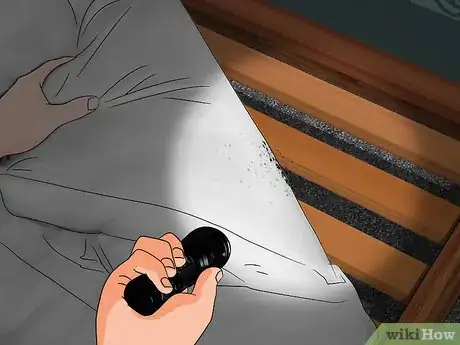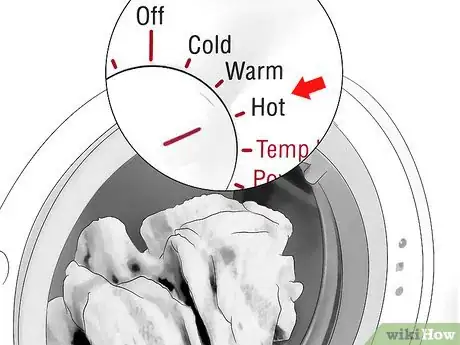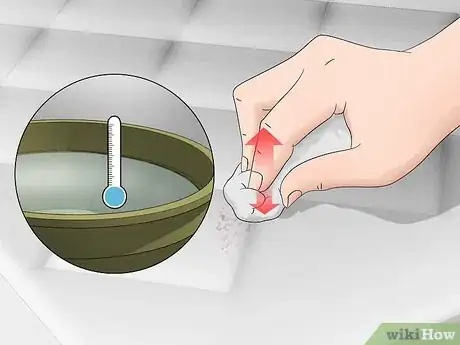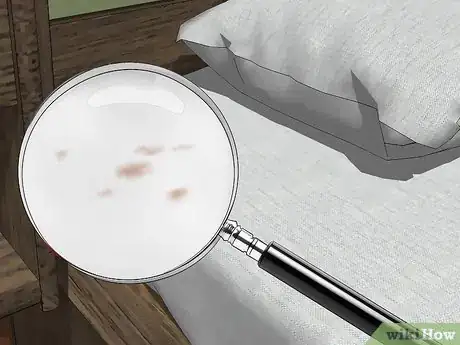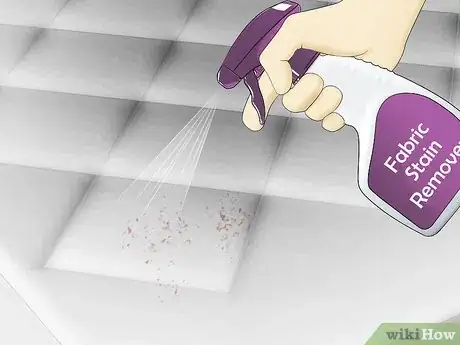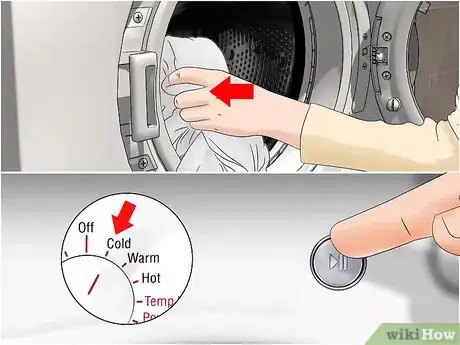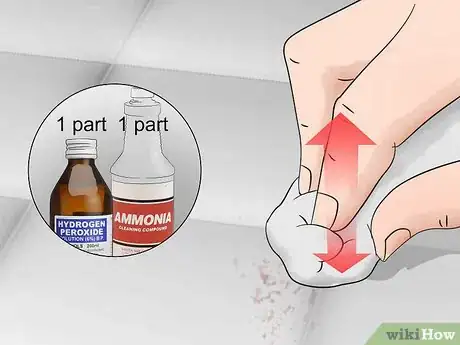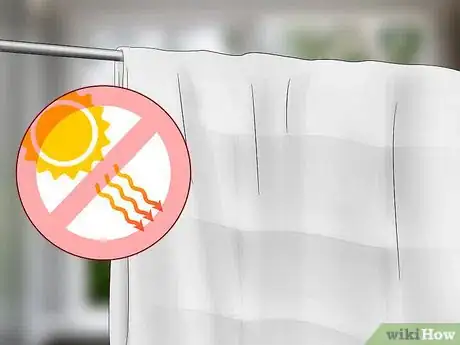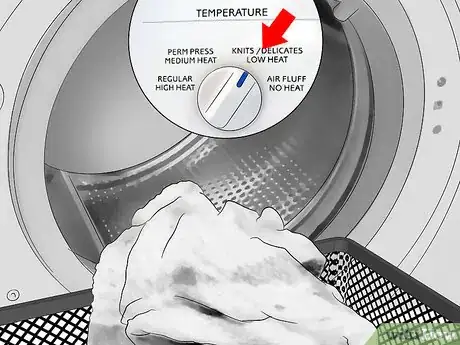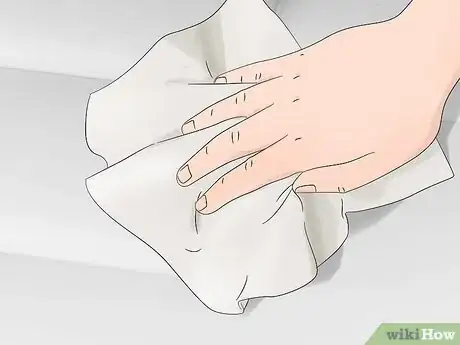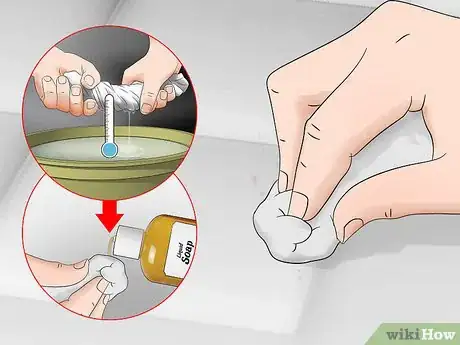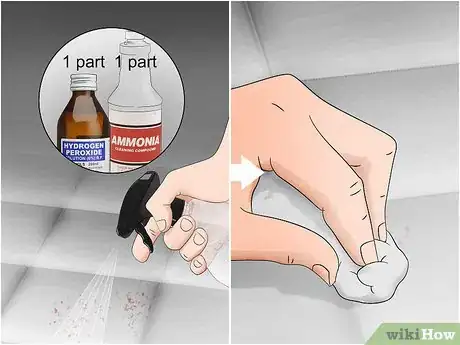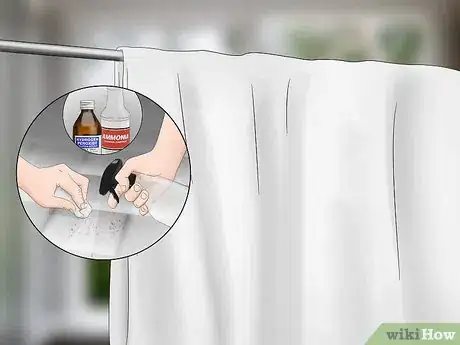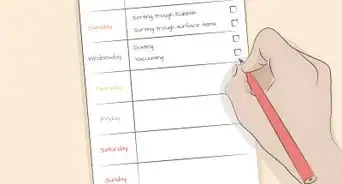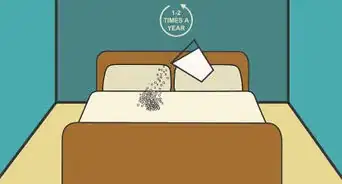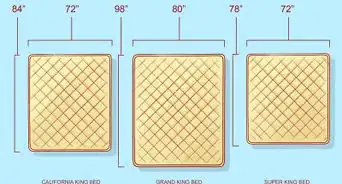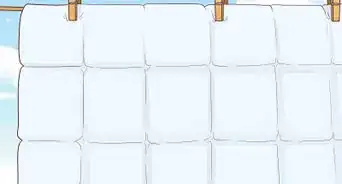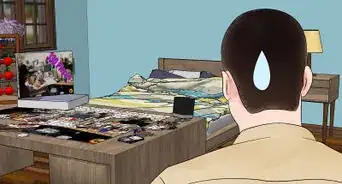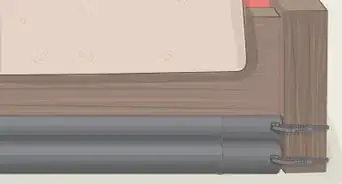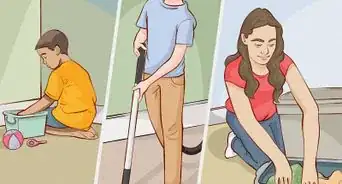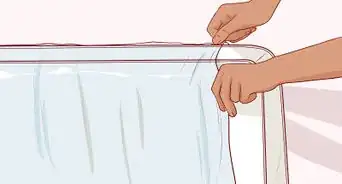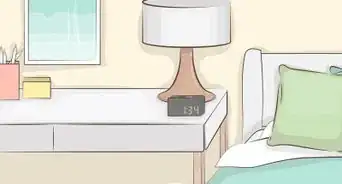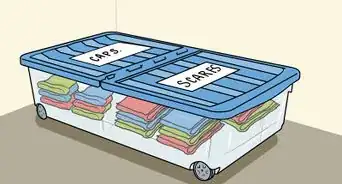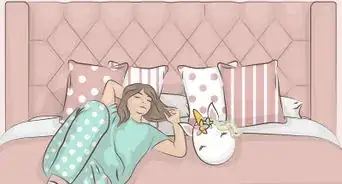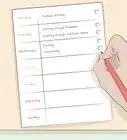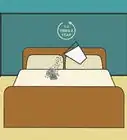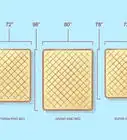This article was co-authored by Alicia Sokolowski. Alicia Sokolowski is a Green Cleaning Specialist and the President and co-CEO of AspenClean, a green cleaning company in Vancouver, British Columbia. With over 17 years of experience, Alicia specializes in creating a healthier, green alternative to chemical-based cleaning products and services. AspenClean develops and manufactures its own line of 100% Natural, EcoCert® certified, and EWG verified™ cleaning products. AspenClean’s glass cleaner was voted Parent’s Green Pick 2020 by readers of the Parents’ magazine. Alicia holds a CPA designation and a Bachelor’s degree in Commerce and Finance from the University of Toronto.
This article has been viewed 173,189 times.
The dark splotches on your mattress, bedspread, and pillows come from the feces of bed bugs that have been feeding on you during the night. Cold water washing might do the trick for fresh, light stains. Heavier stains will need to be pre-treated with an enzyme based stain remover and/or a peroxide-ammonia mixture. Whatever you do, keep heat away from the fabric until you've made every effort to remove the stain.
Steps
Reacting Immediately
-
1Locate the nesting area(s). If you don't get rid of the bed bugs, the stains will continue to plague you.[1] Look for bugs and eggs in and around your bed, in the drawers of nightstands and dressers, behind and under furniture, and in curtains.
- A flashlight can help you spot bugs and their eggs more clearly. Bugs will be light brown and small. Eggs are often laid together in groups.
- Bed bugs love to hide in cracks, corners, and recessed areas. Carpets, clothing, and other fabric items can become infested with bed bugs.[2]
-
2Kill bed bugs with heat and cold. Fabric items must be a laundered at 122 °F (50 °C) to kill bed bugs, and it'll likely take several washings before the bugs are completely removed. Fabric kept at or below 32 °F (0 °C) for 2 weeks will also kill the bugs.
- Small and large items can be encased in special bed bug killing covers. These can be bought at most convenience and grocery stores.
- Severe infestations may require chemical treatments or the services of bed bug removal experts.[3]
Advertisement -
3
-
4Monitor hot spots to prevent reinfestations. A missed egg or bed bug could result in the return of this pest. Beg bugs tend to congregate in certain areas, so keep an eye on the places the infestation was the worst so you can take action if your problem is on the rebound.[7]
Washing and Spot Treating Fabric
-
1Pre-treat stains with an enzyme based fabric stain remover. Spray the stain remover directly onto the spots. Check the label of your stain remover to confirm the amount of time you should allow the cleaner to sit.
- Most products recommend waiting no more than 30 minutes before washing the fabric.
- These kinds of stain removers can be bought at most general retailers and grocery stores.[8]
-
2
-
3Spot treat remaining stains with hydrogen peroxide and ammonia. Before you apply hydrogen peroxide, bear in mind that it can sometimes lighten the color of fabric. If stains remain after the washing, apply equal parts peroxide and ammonia directly to the stains and blot them with a clean rag until gone.
- To prevent unnecessary stress on the fabric, only blot at stains for about 10 to 15 minutes. Any longer may damage the fabric.[11]
-
4Air dry the fabric, then repeat the cleaning process as necessary. Keep the fabric out of the sun and away from heat. Once dry, if necessary, clean the fabric same as before: blot stains with cold water, pre-treat them with an enzyme cleaner, wash the fabric on “Cold,” spot treat, then stains will likely be gone.
- Stains that are especially bad or have set may be impossible to entirely remove. You might be able to lift stains further with another round of cleaning, but this may be rough on the fabric.
-
5Dry your laundry on low heat, alternatively. Set your dryer to the lowest heat setting if air drying the fabric isn't an option. Once dry, it’s ready to be put away. Treat bed bug stains in this fashion as soon as possible to prevent them from becoming permanent.
Removing Mattress Stains
-
1Use a dry washcloth to scrub the spots on your mattress dry. If the stains are fresh and damp, a dry washcloth (or, better yet, a microfiber cloth) will pull up moisture from the stain. Along with the moisture will come blood and bed bug fecal matter, making the stains easier to clean.
-
2Spot clean light stains with cold water and hand soap. You may be able to lift light stains by blotting them with a clean rag dampened with cold water and a dab of hand soap. As the stains lift, switch to a clean portion of rag so it doesn’t spread.[12]
-
3Treat stubborn stains with hydrogen peroxide and ammonia. Mix equal amounts of peroxide and ammonia in a spray bottle and thoroughly mist stains, then blot them with a clean terrycloth rag. Limit peroxide/ammonia treatments to 10 to 15 minutes to prevent damage to the mattress.
- Sprinkle a fine layer of dry borax on stains that remain following your spray treatment. Rub the borax into the stains lightly with a clean terrycloth rag.[13]
-
4Reapply the cleaning process as necessary. Allow the mattress to air dry completely in a shaded area with good airflow. If stains remain when the mattress is dry, spot clean it again with cold water and hand soap, then treat it with peroxide and ammonia until the stains are gone.[14]
- Cleaning the stains again in this fashion more than twice could take a toll on the fabric and cause it to fade color or deform.
- Good airflow will help prevent your mattress from picking up a musty odor and will shorten the amount of time it takes to dry.
- If you’re in a hurry to dry your mattress, point a fan at it or use a blow dryer set to “Cool.” Always avoid heat when treating bed bug stains.[15]
Expert Q&A
Did you know you can get expert answers for this article?
Unlock expert answers by supporting wikiHow
-
QuestionCan you wash a bed spread with bed bug stains?
 Alicia SokolowskiAlicia Sokolowski is a Green Cleaning Specialist and the President and co-CEO of AspenClean, a green cleaning company in Vancouver, British Columbia. With over 17 years of experience, Alicia specializes in creating a healthier, green alternative to chemical-based cleaning products and services. AspenClean develops and manufactures its own line of 100% Natural, EcoCert® certified, and EWG verified™ cleaning products. AspenClean’s glass cleaner was voted Parent’s Green Pick 2020 by readers of the Parents’ magazine. Alicia holds a CPA designation and a Bachelor’s degree in Commerce and Finance from the University of Toronto.
Alicia SokolowskiAlicia Sokolowski is a Green Cleaning Specialist and the President and co-CEO of AspenClean, a green cleaning company in Vancouver, British Columbia. With over 17 years of experience, Alicia specializes in creating a healthier, green alternative to chemical-based cleaning products and services. AspenClean develops and manufactures its own line of 100% Natural, EcoCert® certified, and EWG verified™ cleaning products. AspenClean’s glass cleaner was voted Parent’s Green Pick 2020 by readers of the Parents’ magazine. Alicia holds a CPA designation and a Bachelor’s degree in Commerce and Finance from the University of Toronto.
Green Cleaning Specialist
-
QuestionDo bed bugs leave stains on wood, like headboards?
 Community AnswerYes, bedbugs may discolor wood.
Community AnswerYes, bedbugs may discolor wood. -
QuestionCan bed bugs stain carpet?
 Community AnswerIt depends on what carpet it is. If it's pretty thick, it is most likely that it won't be stained. If it's thin, it is probably going to get stained. If you don't want the stains to show on your carpets, you can use the "How to Get Rid of Bed Bug Stains" hacks or even try getting a darker colored carpet.
Community AnswerIt depends on what carpet it is. If it's pretty thick, it is most likely that it won't be stained. If it's thin, it is probably going to get stained. If you don't want the stains to show on your carpets, you can use the "How to Get Rid of Bed Bug Stains" hacks or even try getting a darker colored carpet.
Things You’ll Need
- Cold water
- Clean rags (several)
- Enzyme based stain remover (optional; recommended)
- Hydrogen peroxide
- Ammonia
- Hand soap
- Terrycloth rags
- Borax
References
- ↑ Alicia Sokolowski. Green Cleaning Specialist. Expert Interview. 15 September 2020.
- ↑ http://www.domyownpestcontrol.com/how-to-get-rid-of-bed-bugs-a-449.html
- ↑ http://www.domyownpestcontrol.com/how-to-get-rid-of-bed-bugs-a-449.html
- ↑ Alicia Sokolowski. Green Cleaning Specialist. Expert Interview. 15 September 2020.
- ↑ https://www.hunker.com/13424023/how-to-remove-brown-stain-spots-from-bed-bugs
- ↑ https://www.realsimple.com/home-organizing/cleaning/cleaning-stain-removal/remove-blood-stains
- ↑ http://www.domyownpestcontrol.com/how-to-get-rid-of-bed-bugs-a-449.html
- ↑ https://www.hunker.com/13424023/how-to-remove-brown-stain-spots-from-bed-bugs
- ↑ Alicia Sokolowski. Green Cleaning Specialist. Expert Interview. 15 September 2020.
- ↑ https://www.realsimple.com/home-organizing/cleaning/cleaning-stain-removal/remove-blood-stains
- ↑ https://www.hunker.com/13424023/how-to-remove-brown-stain-spots-from-bed-bugs
- ↑ https://www.realsimple.com/home-organizing/cleaning/cleaning-stain-removal/remove-blood-stains
- ↑ https://www.hunker.com/13424023/how-to-remove-brown-stain-spots-from-bed-bugs
- ↑ https://www.hunker.com/13424023/how-to-remove-brown-stain-spots-from-bed-bugs
- ↑ http://www.esquire.com/style/advice/a42934/clean-mattress/
- ↑ Alicia Sokolowski. Green Cleaning Specialist. Expert Interview. 15 September 2020.
About This Article
If your mattress or sheets are stained from bed bugs, you can get rid of the stains with some simple household ingredients. Start by blotting any stains with a damp, cold cloth. To clean your bed sheets, spray the stains with stain remover and leave it to sit for 30 minutes. Then, put them in the washing machine on a cold setting. It’s important to avoid heat, since this can set the stains and make them harder to clean. When the cycle’s finished, air dry your sheets or put them in your dryer on the lowest heat setting. To clean your mattress stains, blot them with a cold, damp rag and hand soap. For stubborn stains, mix equal parts peroxide and ammonia in a spray bottle and blot them with the mixture. For more tips, including how to kill bed bugs on your sheets, read on!
